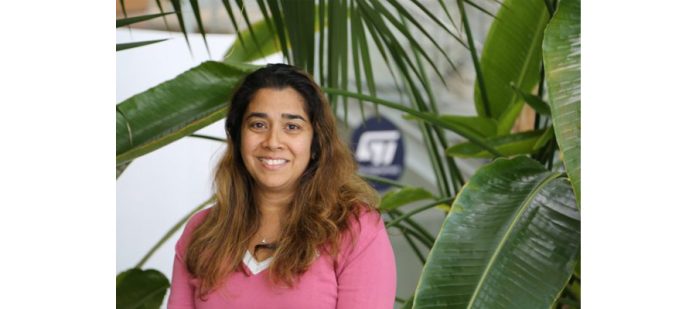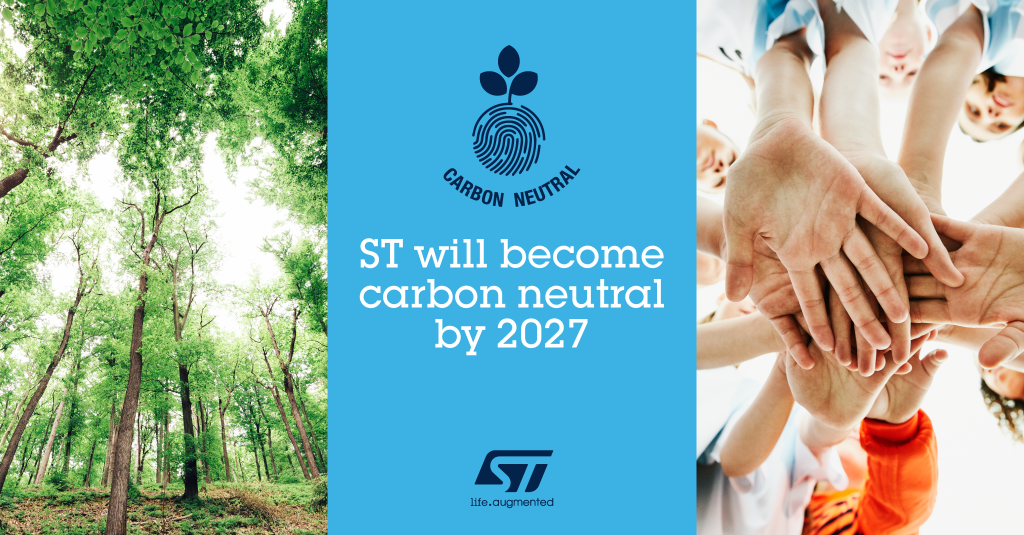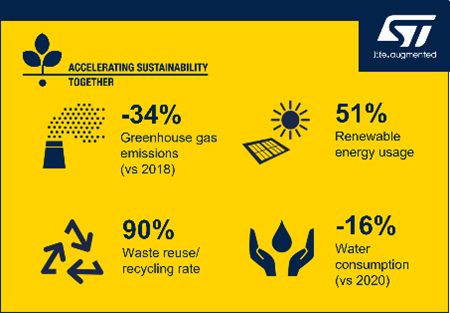“People are our biggest asset. But making sustainability part of our DNA and embed it in our everyday decision process are not enough”
STMicroelectronics is one of the world’s leading semiconductor companies and is the world first semiconductor company committed to become carbon neutral by 2027. ST is committed to sustainability and is actively working to reduce the environmental impact of its business practices.
In this interview, with Rajita D’Souza, President of Human Resources and Corporate Social Responsibility, STMicroelectronics, we learnt about ST’s overall commitment to sustainability and Carbon Neutral initiatives. Excerpts
ELE Times: What is ST’s vision for sustainability in the semiconductor industry and impact that ST aims to create given the pace of change and disruption today?
ST: The semiconductor industry works behind the scenes, powering almost everything in our modern lives. Hence, ST plays an essential role in building a more sustainable way of living. Sustainability isn’t a whole new story for us —we created our first environmental policy in 1993 and released our first environmental report in 1997. And we have been striving to increase our efforts and the transparency of our reporting every year since then.
In addition to protecting the environment, ST constantly aims to improve its social and economic impact. Putting people first and creating long-term value for our 200,000 customers and the local communities where we operate are equally important. As President of Human Resources and Corporate Social, I am happy to share that ST has set a strong strategy with realistic goals, achieving net-zero carbon emissions across our operations by 2027 being one of them.
ELE Times: Please share company’s priorities for promoting sustainability initiatives?
ST: On the more practical aspect, ST’s ambition translates into a long-term exercise. Aligning with the United Nations’ sustainable development goals, our agenda has become broader but also more precise over the years. And just as with any business activity, we constantly track our sustainability process with data to understand where we are and where we need to go. ST also receives regular third-party evaluations to ensure full transparency. With this goal in mind, we carefully select our suppliers and subcontractors, making sure all of them share the same strategic vision, and comply with our transparency and traceability requirements.
People are our biggest asset. But making sustainability part of our DNA and embed it in our everyday decision process are not enough. Create an environmentally, socially, and economically sustainable future also requires a fair amount of innovation. And that’s where ST comes into play. Every year, the company invests more than 13.5% of its revenue in research, $1.72 billion in 2021. Working together with the best R&D centers around the globe, our creators push the boundaries of technologies, investigating earth-abundant materials and new designs, such as the ability to stack chips on top of each other to make electronics products more energy efficient.
We are living in a period of change, with a new energy landscape. Today’s complex economic, social, and political dynamics require constant attention and extraordinary responsiveness. To address the chip shortage and accelerate the transition, ST, together with its partners, is bolstering production across the globe with two additional semiconductor “fabs” to be built in Europe next year. We are also planning to expand in Asia.
ELE Times: How is the rollout of ST’s sustainability initiatives and how are your ensuring that technology innovations are adopted?
ST: We innovate to support the transition of society to a more sustainable approach with low-carbon and energy-efficient products. From materials, design to manufacturing, ST masters the entire semiconductor value chain. In contrast to pure semiconductor foundries, this business model gives us the ability to act rapidly on all fronts. In 2021, 37% of our sales came from products that help cut greenhouse gas emissions across the product lifecycle according to the European taxonomy standard, and 69% of ST new products were labeled as responsible.
We believe innovation plays a vital part in facing today’s climate change challenges. More than 8,400 R&D engineers work across our sites to accelerate the transitions. Our disruptive technologies are helping make smart mobility, industry 4.0, energy management and power efficiency, as well as advanced connectivity not only possible, but easy and affordable. Wide bandgap technologies such as silicon carbide and gallium nitride are just one example. During the last decade, ST has massively invested and innovated in these new materials to help carmakers make the next generation electric vehicles the most attractive and obvious choice, as well as to improve efficiency in power-hungry industrial applications. Moving computing and AI from the Cloud into IoT devices is another key track.
It’s a win-win strategy mitigating the data deluge amid the digital transformation, with end-users benefiting from low-latency, low-power IoT devices. Beyond the IoT market, this paradigm shift is currently redefining the frontiers of healthcare, moving traditional medical-certified devices outside of the lab into discrete wearable medical appliances, such as portable ECG monitoring devices. As a leader in sensing and radiofrequency solutions, ST regularly releases advanced products to enable smart manufacturing, prioritizing people’s safety at work while increasing the industry overall performance.
ELE Times: How does ST plan to drive its environment-related agenda for a sustainable society?
ST: We announced end of 2020 our intention to become carbon neutral by 2027. This includes all direct emissions, but also indirect ones from the energy we use, and all transportation emissions. In 2021, our greenhouse gas emissions dropped by 34% compared to 2018 in absolute terms—a feat considering the company increased its manufacturing capacities during this period.
To reach carbon neutrality, ST taps into renewable energies with a combination of on-site solar and wind power installations as well as long-term agreements with renewable power providers. Last year, we’ve made tremendous efforts to upgrade our Bouskoura assembly and testing site in Morocco. The site now sources 50% of its energy from renewable sources compared to 1% last year. Additionally, semiconductor wafers are manufactured in cleanroom facilities, where stable temperatures and humidity levels are required. To minimize the carbon footprint of our Singapore-based largest “fab”, ST is investing $370 million in a district cooling system that will distribute chilled water through pipes to cool down the facility, replacing hundreds of energy-intensive air conditioning systems. This project should help save 120,000 tons of carbon emissions annually. On the production side, another challenge is water. In 2021, ST reduced its water consumption by 16% per unit of production compared to last year.
“In 2021, our greenhouse gas emissions dropped by 34% compared to 2018—a feat considering the company increased its manufacturing capacities during this period.”
ELE Times: What are ST’s key areas for employees’ initiatives? Please describe the impact of some of your programs?
ST: In addition to its net-zero target, ST creates a workplace that reflects the world’s rich diversity. As a global company operating in more than 35 countries, we offer a diverse working environment with 115 nationalities working together as one team. In 2021, 83% of our employees said that they would recommend ST as a great place to work.
The semiconductor has a long history of being an industry with mostly men. In 2021, women represented 34% of our global workforce. While most tech companies hire around 25% of women, there is still work to be done in this area. But change takes time. To fast-track equity and inclusion and empower the communities in which we operate, ST launched the “STEM your way” program in 2003. Sharing with young people —especially young girls—our passion for science and electronics, ST experts deliver more than 300 STEM sessions annually. So far, more than 70,000 young people benefited from this program.
ELE Times: As we wrap up, can you tell us about your journey around sustainability?
ST: ST has a dedicated sustainability team. Even if Human Resources (HR) are not directly accountable, I still play a central role in implementing sustainable practices. At ST, sustainability is not just a project, it’s a way of life. With more than 25 years of experience in HR and Corporate Social Responsibility, I have spent most of my career trying to protect the health and safety of workers, and build work environments where diversity is embraced, encouraged, and celebrated. I firmly believe that effective communication is key to create a collective mindset around sustainability. From top management to production line workers, I regularly engage with ST employees and other stakeholders throughout this process to make sure we are all moving in the same direction and at the same pace. While a social dimension to sustainability is now well established, I am still learning every single day, constantly adapting ST’s strategy and reporting practices to new realities and opportunities.
ST works with all of you—employees, customers, subcontractors, communities, and governments— to develop technologies, in a sustainable way. At ST, our sustainable technologies start with you. Let’s accelerate sustainability together.
For more information log on to: https://www.st.com/content/st_com/en/about/sustainability.html










